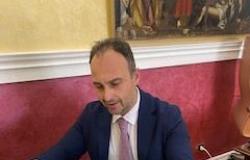The conversation on the topic took place on Monday 17 June “On the seventy-first anniversary of the East Berlin workers’ uprising of 17 June 1953″. In the period from 1954 to 1989 in the Federal GermanyThe June 17th it indicated the National Day of Federal Germany, which was celebrated on that date to remember the events of the workers’ revolt, which took place in the territory of the former GDR. That popular uprising occurred against the socialist state of East Germany, following the entry into force of labor standards that were too rigid and severe towards the working class. That date recalls the events that occurred on June 17, 1953, when in the territory of the former German Democratic Republic, a workers’ revolt was violently suppressed. The dissent began on June 16, as a protest against the too rigid and severe working standards, but within a few hours, it transformed into a more general revolt against the socialist state and the single party in government.
Conversation of the “L’Agorà” club
From these figures the conversation, organized by the Cultural Club “L’Agorà”, with the theme “On the seventy-first anniversary of the workers’ uprising in East Berlin on 17 June 1953”. The new meeting, organized by the organizing cultural association, recorded the presence, as speaker, of Gianni Aiello, President of the organizing association. This is a series of investigations, resulting from patient and detailed research on texts and archival documents, conducted by Gianni Aiello, presented in part during his speech, including various documents, newspapers of the period, the Report of the General Directorate of the German People’s Police (GDF). As reported by Ugo Maria Tassinari, journalist and author of various publications, in “Social conflict, the battle of memory”, where […]
Workers’ revolt
The workers’ revolt in Berlin, which involved almost all the industrial centers of Eastern Germany, occurred in the climate of the “cold war”, which pitted the USA and the USSR. Both Powers covered the revolt with completely false interpretations and few and few voices were raised at the time in defense of the German workers’ struggle, to re-establish the class nature of the conflict. […] . On 15 June 1953, the construction workers of the Stalinallee construction site, who were working on the construction of a hospital complex in East Berlin, went on strike against the imposition of a cut of a third of their wages if they did not increase production by 10%. . The attempts by the leaders of the SED, the Socialist Unity Party of the GDR, were in vain.
Demonstration
On the morning of June 16, 1953, 1,500 workers from Block 40 and Block C-South of Stalinallee demonstrated behind a large banner bearing the words: “We are workers, we are not slaves!”. The workers’ revolt in Berlin, which involved almost all the industrial centers of Eastern Germany, involved over three hundred thousand workers, according to estimates. Thanks to the support of the radios behind the curtain, the news spread like wildfire in various cities of the GDR: marches and workers’ councils asked for more humane rhythms, and negotiations with those in power, the immediate reduction in the prices of primary products, free elections with secret ballot, freedom of the press and speech. In addition to the union demands, political demands were also explicitly made, such as the resignation of the government, freedom of the press and speech. On the morning of June 17, a massive demonstration was organized and workers from various factories marched through the streets of Berlin Mitte and, together with several passers-by who joined them, headed towards the seat of government of the German Democratic Republic.
Factory assemblies
Starting from the early hours of the morning, several meetings followed one another in the various factories, from where several processions of workers set off and headed towards Strausburger Platz, under the control of the Police and the Stasi. At 8 in the morning, according to the news of the period , around 10 thousand people demonstrated in the center of Berlin and, to prevent the participation of other demonstrators, the local police were supported by the Soviet military authorities stationed in the territory of the GDR. At 1 pm, Soviet troops evacuated the government headquarters, previously occupied by demonstrators, while at the same time a state of emergency was declared in East Berlin. At 2.30pm the Soviets garrisoned the Brandenburg Gate with T-34 panzers. At first the agents used truncheons and the demonstrators reacted by throwing stones. Given the worsening of events, a state of emergency was ordered.
Dozens dead
At the end of the day there were dozens of deaths, there will be at least fifty throughout the GDR, where similar demonstrations will multiply; in the following weeks between 8 thousand and 10 thousand people will be arrested and, according to some sources, incarcerated in concentration camps (including former Nazi concentration camps reopened for the occasion); 20 will be shot. Subsequently, a curfew was imposed in the entire eastern sector of the city. Even today, it is unclear how many people died during the uprisings and the death sentences that followed. The official number of victims is 51. After the analysis of documents made accessible since 1990, the number of victims was increased to 125. According to other sources, during the riots on June 17, the American secret services kidnapped in Berlin East the deputy chairman of the GDR council Otto Nuschke, later released. Regarding the workers’ revolt in East Berlin, there are other interpretations, such as those of some newspapers. The British periodical News Statesman and Nation (pro-American and anti-communist) with the headline: “millions of dollars spent to provoke the events in Berlin”.
The West German newspaper the FrankfürterAllgemeine Zeitung (also anti-communist) wrote “June 17 was the work of many deceived people who had obtained support from West Berlin.” In memory of the uprisings in East Germany, West Germany declared June 17th as a national holiday (until 1990, when it was replaced by October 3rd, the date of formal reunification), and the Charlottenburger Chaussee, the road axis that crossed West Berlin, was renamed Straße dessiebzehnten Juni. These are some of the figures that were analyzed by Gianni Aiello (President of the “L’Agorà” Cultural Club). The conversation, organized by the Reggio Emilia cultural association, will be available on the various social network platforms present on the network starting from Monday 17 June.
Continue reading on StrettoWeb




